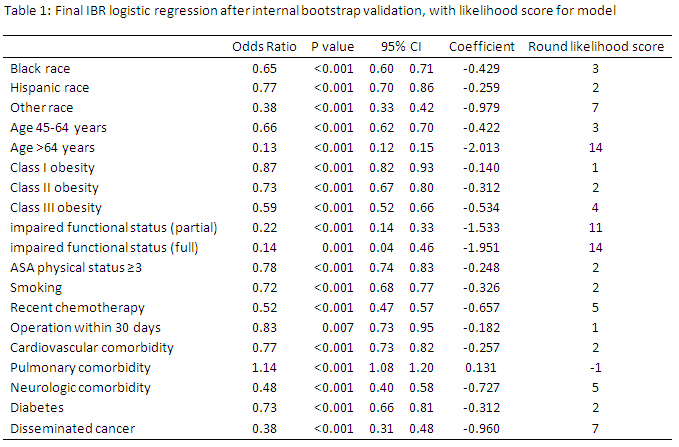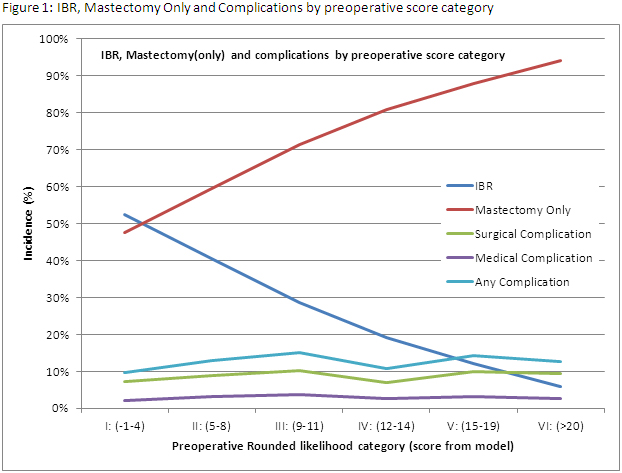Back to 2014 Annual Meeting Posters
Racial disparities in immediate breast reconstruction - an analysis of 48,564 patients from the NSQIP datasets
Jonas A. Nelson, MD, John P. Fischer, MD, Paris Butler, MD MPH, Jason Wink, MD, Joseph M. Serletti, MD, Liza C. Wu, MD.
University of Pennsylvania, Philadelphia, PA, USA.
BACKGROUND:
Immediate breast reconstruction (IBR) rates are increasing, yet recent patterns based on race, ethnicity and patient comorbidities are unknown. The purpose of this study is to perform an updated, comprehensive analysis of IBR using the American College of Surgeons - National Surgical Quality Improvement (NSQIP) dataset with a specific focus on race and ethnicity.
METHODS:
All women undergoing mastectomy only or mastectomy with IBR from 2005 to 2011 were identified in the ACS-NSQIP datasets utilizing 2010 current procedural technique codes. IBR patients were then compared to patients undergoing mastectomy only with regards to preoperative variables. Any significant variable found on univariate analysis was subjected to a bootstrap analysis for internal validation. Based on inclusion in the final bootstrap model, a multivariate logistic regression was performed to determine factors independently associated with receipt of IBR. Significant factors were utilized to design a weighted risk model to predict preoperative receipt of IBR. IBR patients were then categorized by type of reconstruction (implant/expander reconstructions (I/E) or autologous reconstructions). Each of these respective cohorts was compared to patients undergoing mastectomy alone, and then subjected to a multivariate analysis to determine preoperative factors associated with each modality of reconstruction.
RESULTS:
Overall, 48,564 patients who underwent mastectomy were included, of which 16150 (33%) underwent IBR. Rates of IBR increased significantly over the study period from 26% of patients in 2005 to 40% in 2011 (p3, and presence of comorbid conditions were all negatively associated with receipt of IBR (all p<0.001). This model demonstrates that patients with no risk factors or comorbidities have a 50% rate of IBR. However, IBR drops in a linear fashion with an increasing score category. Examining I/E reconstruction, each of the overall factors continued to display a strong, negative association with IBR. When examining autologous reconstruction by multivariate regression most of these factors remained significant, although receipt of IBR in white compared to black (p=0.69) and Hispanic patients (p=0.15) did not significantly differ. A secondary multivariate regression of postoperative outcomes demonstrated that black race was independently associated with a higher risk of medical complications in IBR.
CONCLUSIONS:
This study examining IBR with the ACS-NSQIP dataset demonstrates that certain populations are less likely to undergo this potentially beneficial treatment. Specifically, differences based on race and ethnicity continue, even with a national focus on the topic. Interestingly, although I/E reconstruction is increasing nationally, this may be a disproportionate increase in white patients. A greater focus on continued patient education and cultural understanding is warranted to provide all patients presenting for mastectomy the opportunity for IBR.
 
Back to 2014 Annual Meeting Posters
|




